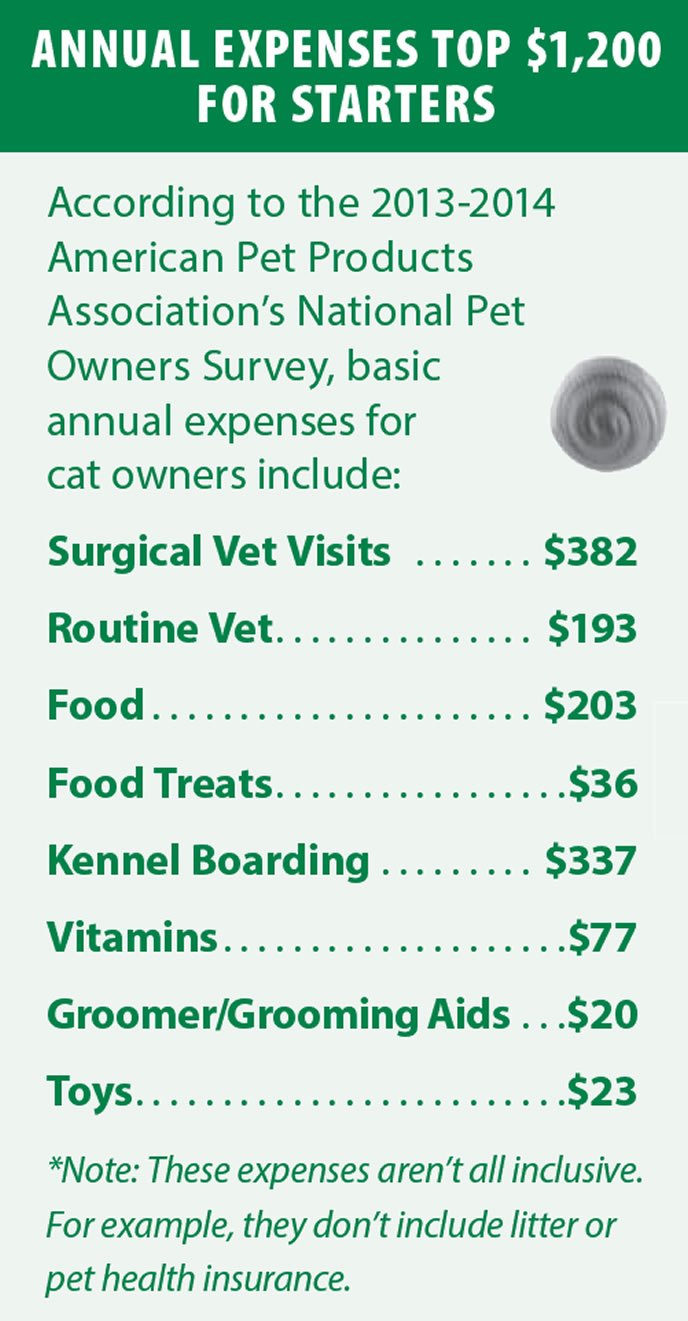If you’re debating whether to bring home a new cat, you may stop and wonder: Do I dare add one more? We love animals, but the point comes when we should stop adding them to our households and hearts, whether due to our current pet population, expense, time involved in caring for multiple pets or this basic point about feline nature:
“Cats are mostly happy as only cats,” says animal behaviorist Katherine A. Houpt, VMD, Ph.D., emeritus professor at Cornell University College of Veterinary Medicine.

It may seem that a second cat could provide companionship for your lone feline or that a new kitten could enliven an old cat, but Dr. Houpt cautions, “If you have a cat, there are lots of things you can do to improve the quality of his life — but getting another cat is not one of them.”
Her Reason: If you look at natural feral cat populations, it’s the mothers and their daughters who live more or less in harmony. They drive away anyone else. Females usually don’t have friendly relationships with non-siblings. They will fight. So if you dearly want more than one cat, Dr. Houpt suggests getting littermates. Most likely they’ll get along until they’re 18 months old, and then they may begin to fight. Of course, occasionally unrelated cats can get along.
How many cats are too many? It’s impossible to a name specific number because of all the variables, but there is this expert advice: “If one cat is hiding, fighting or urinating outside the litter box, there are too many cats,” Dr. Houpt says. “More than two is often too many.” The average cat-owning household has 2.1 cats.
Here’s a typical scenario that Dr. Houpt sees: An owner has one cat who purrs when they’re alone together, but when company arrives, the pet vanishes under a bed. Instead of working with him to become more social, the owner takes in a second cat. This cat is bold and smart, but he also beats up on the original cat.
You have several ways to deal with such problems. You can increase vertical space in the home, for example, by setting up several cat trees for easy escapes. Or keep the tops of bookcases clear so that a cat can move along on a trail up high.
Some cats divide up territory among themselves. At the extreme, however, your current cat might urinate in the house if he’s upset about a newcomer.
Evaluate Personalities. The first step when considering adding a pet is to evaluate the ones you have now. How social or shy are they? Sometimes you don’t know until you try to bring another animal home.
The next step is to consider your lifestyle: The more animals you have, the more time you’ll need to tend to and play with them, says Holly Putnam, DVM, program clinician in Maddie’s Shelter Medicine Program at Cornell. How much free time do you have? How long are you away from home each day?
While owners may want to rely on pets entertaining each other, that isn’t a substitute. In Dr. Putnam’s household, which she shares with four cats and a dog, “None of my cats will lie together or groom each other. They tolerate each other.” Mickey, her sensitive 12-year-old domestic shorthair, doesn’t get along with the other cats and will spray urine around the house when he’s upset. Dr. Putnam has concluded that she won’t add more cats to her home to avoid upsetting Mickey further.

Cost is another factor when weighing whether to take in another cat who may live up to 20 years. By one estimate, it costs more than $1,200 a year to care for at least one cat. (See sidebar on Page 7). The ASPCA estimates the minimum cost is $1,035 for the first year and around $670 yearly thereafter, though its figures don’t include kennel boarding or surgical veterinary visits.
“You shouldn’t expect to pay less than this,” according to ASPCA.org, “and you should definitely be prepared to pay more.” Dr. Putnam notes that healthcare costs can rise in a pet’s senior years, when, for example, periodontal problems can require expensive treatment.

Of course, all these factors are moot if you want a third cat and your apartment building, condo board or other housing situation forbids more than one or two pets. Knowing this, animal shelters commonly call landlords to check rules before signing off on an adoption for renters, Dr. Putnam says.
In the end, no matter how much you plan, chances are that life circumstances could dictate additional pets, thanks to blending two households through marriage, inheritance of Mom’s two cats or a stray no one seems to want. If it turns out that you need help bringing harmony among your pets, know that you’re not alone and seek advice from your pets’ veterinarian.
Multiple cats can be a challenge, but often, as in the case of adoptions, you’ll enrich their lives, and they can do the same for you.



